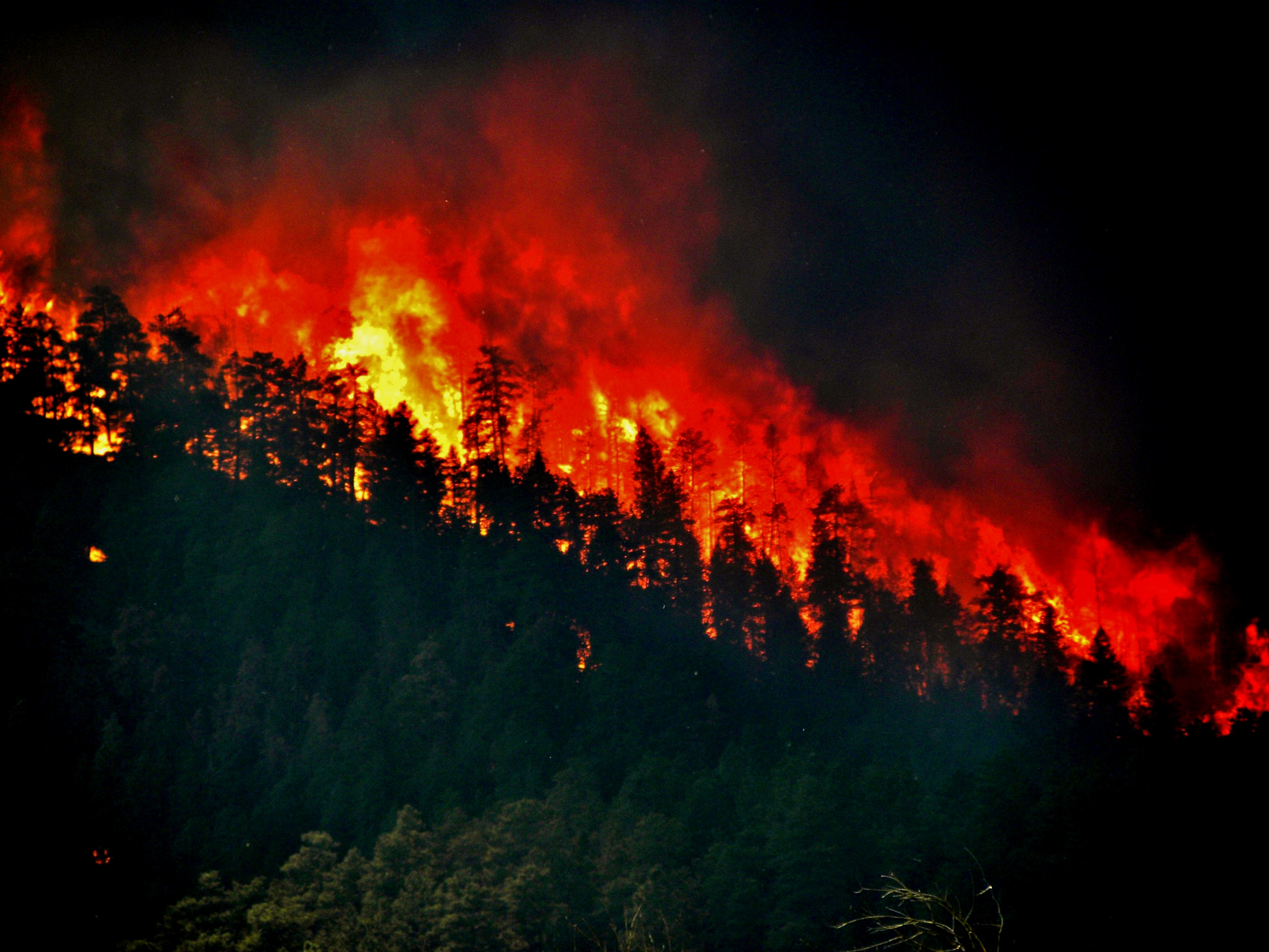
Ever since Prometheus stole fire and gave it to humans, we’ve been the only species that can start and stop a fire. Darwin believed human capability to control fire was the greatest evolutionary achievement, second only to language. Now, that capability may be changing.

Increase temperatures by 1.8 degrees Fahrenheit, decrease rainfall by 30%: it’s a formula for fire risk. Add occurrence of lightning strikes, like those in California recently, and there is a predictable crisis. According to Berkeley Atmospheric Science Center, the area’s temperatures are 3.5 degrees higher than a century ago. Lightning strikes have also increased: up by 12% across the United States. According to California governor Gavin Newsom, California experienced 10,849 lightning strikes in 72 hours in August 2020, amid record temperatures. In 2020, California has battled 40 percent more fires than in 2019. It’s not just a California problem. In Alaska, temperatures are increasing faster than anywhere else in the USA, with four of the ten largest fire years on record occurring in the past fifteen years, with 2 million acres lost in each major fire year. In Colorado, over 1 million people receive drinking water from the Upper South Platte Watershed, northwest of Denver: in the past two decades, fires have threatened the water utility. In Colorado this week, wildfires burned across 135,423 acres, causing the state to warn residents about air quality and banning campfires: the Grizzly Creek Fire closed Interstate 70 for more than one week. Some warned that after the fires, landslides may increase. Water levees across the Colorado River Basin have decreased, including reservoirs of Lake Mead and Lake Powell. In South America, wildfires also pose dangers. It’s a global problem that will increase with climate change. What can we do?

World Weather Attribution (WWA), an international collaborative organization including the Environmental Change Institute at Oxford (ECI), Laboratories des Sciences du Climat et de l’Environment (LSCE), National Center for Atmospheric Research (NCAR), Red Cross Red Crescent Climate Centre, and Royal Netherlands Meteorological Institute (KNMI), uses satellite data and other sources to monitor atmospheric pressure patterns and levels of water vapor to predict heatwaves, fires, droughts, among other weather threats. Study data on every global region from 2014 – 2020 can be found here. These studies provide both warnings, and the basis for sustainability litigation.
Like sea-rise that will continue to some extent after we solve the climate crisis, temperature increases, with resultant drought and fires, can also be expected. There are some options: limit building and development in fire-prone areas, manage forests, combat insect-borne disease, improve our power grid, strengthen data analysis on climate change, and develop early warning systems for wildfire smoke that can pose air pollution and health risk. Future environmental decisions will need collaboration among biologists, fire scientists, and landscape ecologists, according to Professor Van Butsic of UCBerkeley, who states “land sits at the nexus of ecological conditions and human decisions.”

Wildfire protection innovations include Elevated Rain Induced Solution (ERIS) developed by Wildfire Innovations with targeted, moveable, suppression systems. Early detection innovations like SmokeD by IT for Nature can detect fires and alert nearby businesses and residents, via a phone app. Verisk Analytics Inc. developed a fire risk management tool to evaluate fuel, slope, and access, generating a hazard score. Will reforestation help? According to studies, the cost of replanting may bring promising returns: one reforested acre will be worth $191, 110; 30 acres, $5,733.300. Eden Projects and MillionTrees help restore land and lives. Private investment may see an opportunity, with investor capital innovations like Blue Forest Resilience Bond (FRB) and Encourage Capital.
Butsic, Van, A.D. Syphard, J.E. Keeley, and A. Bar-Massada. (2017). “Can private land conservation reduce wildfire risk to homes? A case study in San Diego County, California, USA.” Landsc. Urban Plan, 157, 161-169. LUC LAB: Researching Land Use and Land Use Change, University of California Berkeley.
Darwin, C. The Descent of Man. London: 1871.
Doer, Stefan H. and Cristina Santin. “Global trends in wildfire and its impacts: perceptions versus realities in a changing world. 5 June 2016. Philos Trans R Soc Lon B Biol Sci. 2016 Jun 5: 371 (1696): 20150345. doi: 10.1098/rstb.2015. 0345 PMCID: PMC4874420.
Finley, Bruce. “Climate change hits home in Colorado with raging wildfires, shrinking water flows and record heat: State faces continued increases in average temperatures for decades due to past burning of fossil fuels.” 25 August 2020. The Denver Post. https://www.denverpost.com/2020/08/19/colorado-climate-change-wildfire-drought/
Gowlett, J.A.J. “The discovery of fire by humans: a long and convoluted process.” 5 June 2016. https://doi.org/10.1098/rstb.2015.0164. Article ID: 20150164. Special issue on The Interaction of Fire and Mankind. https://doi.org/10.1098/rstb.2016.0149
Lenihan, Rob. “Innovation at the forefront of wildfire prevention.” 24 July 2018. Business Insurance. https://www.businessinsurance.com/article/20180724/NEWS06/912322839/Disaster-management-innovations-at-the-forefront-of-wildfire-prevention#.
Lightning Maps. https://www.lightingmaps.org.
Mulkern, Anne C. “Climate Change Has Doubled Riskiest Fire Days in California.” 3 April 2020, Scientific American. https://www.scientificamerican.com/article/climate-change-has-doubled-riskiest-fire-days-in-california/
NASA. Forecasting Fires in South America. VIDEO: https://commons.wikimedia.org/w/index.php?title=File%3AForecasting_South_American_Fires.ogv
Newsom, Gavin. “CA has experienced 10,849 lightning strikes in the last 72 hours.” 19 August 2020. Twitter: @GavinNewsom.
Temple, James. “Yes, climate change is almost certainly fueling California’s massive fires.” 20 August 2020, Technology Review. https://www.technologyreview.com/2020/08/20/1007478/california-wildfires-climate-change-heatwaves/
Union of Concerned Scientists. “The Connection between Climate Change and Wildfires” published 9 September 2011; updated 11 March 2020. https://www.ucsusa.org/resources/climate-change-and-wildfires
U.S. Global Change Research Program. “National Climate Assessment”. https://nca2018.globalchange.gov
World Weather Attribution. https://www.worldweatherattribution.org/analysis/projects/
Building the World Blog by Kathleen Lusk Brooke and Zoe G. Quinn is licensed under a Creative Commons Attribution-NonCommercial-NoDerivs 3.0 Unp
